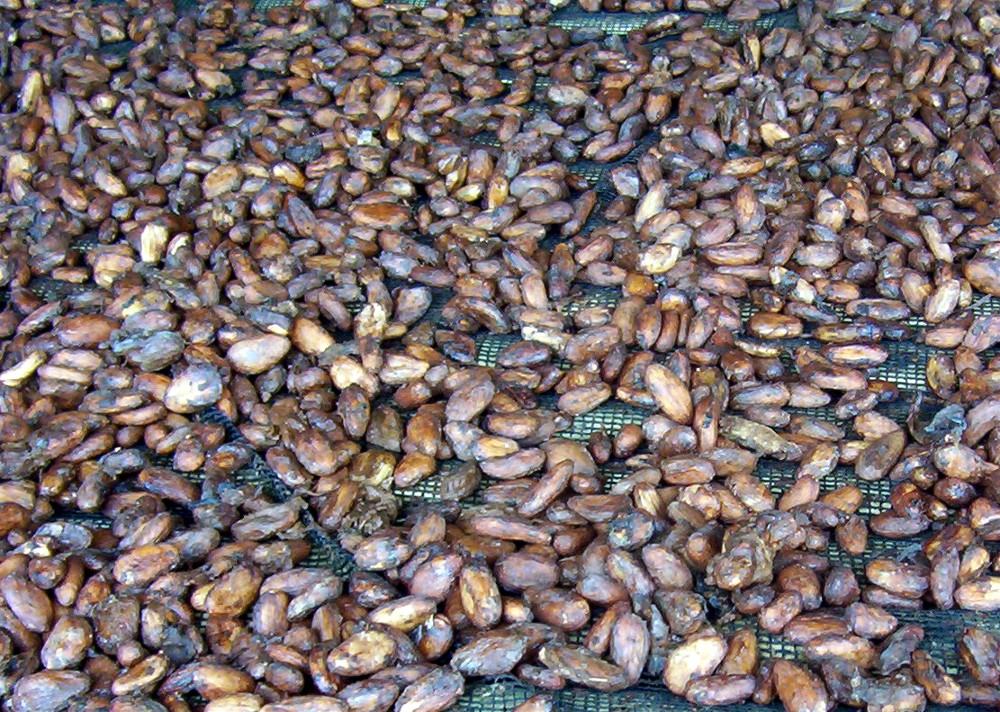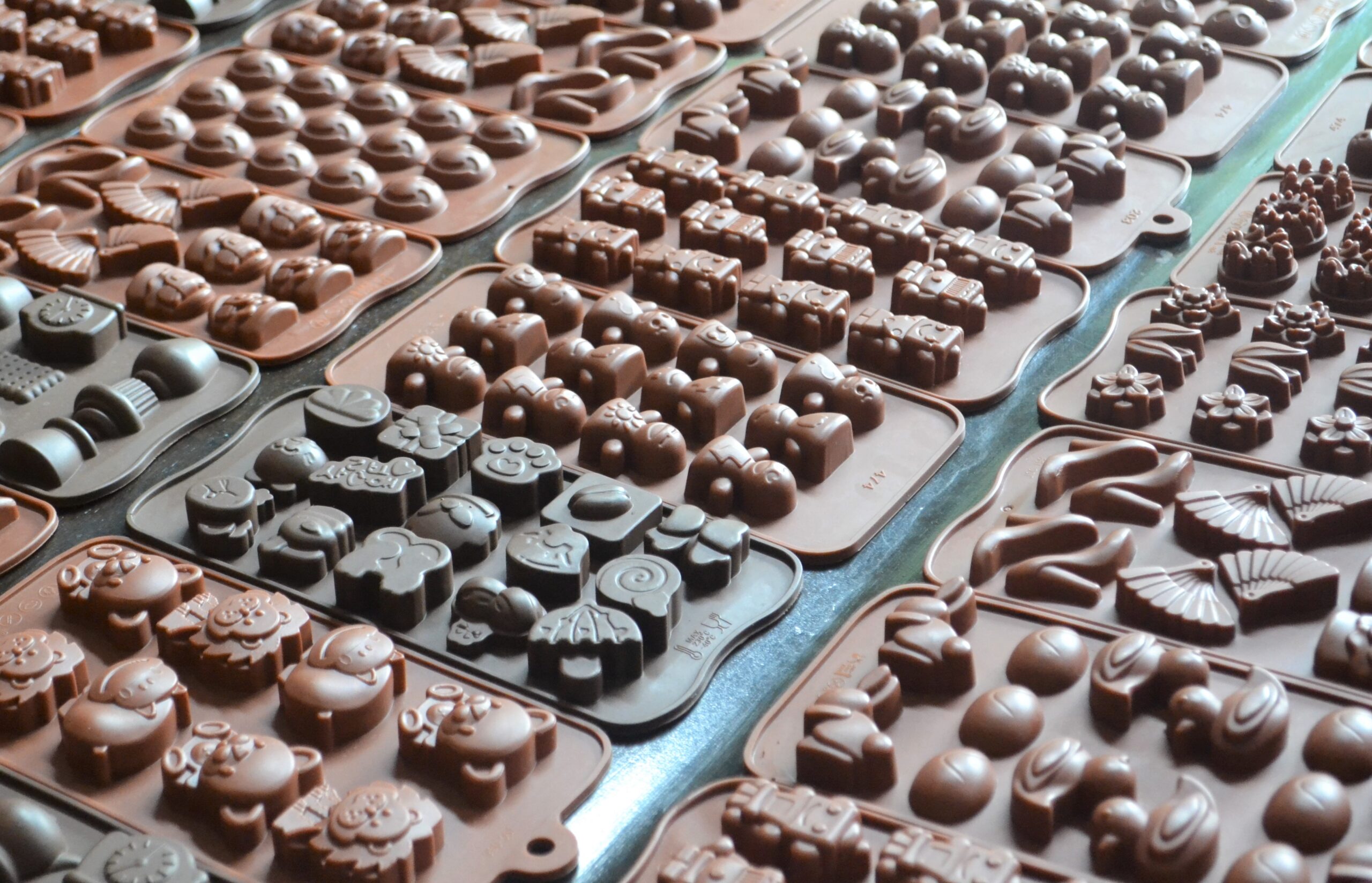Text and Photos by Henrylito D. Tacio
It seems unbelievable that the bitter seeds of a pod can be turned into delectable chocolate.
The history of chocolate started 4,000 years ago in ancient Mesoamerica (now known as Mexico). This was where cacao plants were first cultivated. The Olmec, one of the earliest civilizations in Latin America, drank their chocolate during rituals and used it as medicine.
It was explorer Hernan Cortes who brought chocolate to Spain in 1528. Served as a drink, Spanish chocolate was mixed with sugar and honey to sweeten the naturally bitter taste.
In 1828, the invention of the chocolate press revolutionized chocolate making. An innovative device developed by Dutch chemist, Coenraad Johannes van Houten, was able to squeeze cocoa butter from roasted cacao beans, leaving a fine cacao powder behind.
The powder was mixed with water and poured into a mold, where it solidified into an edible bar of chocolate. This innovation opened the door for chocolate to be mass-produced.
During the 19th century, chocolate had come a long way, but it was still hard and difficult to chew. A Swiss chocolatier named Rudolf Lindt invented a conch machine which mixed and aerated chocolate, “giving it a smooth, melt-in-your-mouth consistency that blended well with other ingredients.”
Today, chocolate is a billion-dollar business. “Most modern chocolate is highly-refined and mass-produced, although some chocolatiers still make their chocolate creations by hand and keep the ingredients as pure as possible,” history.com reports. “Chocolate is available to drink, but is more often enjoyed as an edible confection or in desserts and baked goods.”
What most people don’t know is that chocolate is good for your health. In fact, eating dark chocolate every day for ten years could reduce the likelihood of heart attacks and strokes in some high-risk patients.
A team of researchers from Australia used a mathematical model to predict the long-term health impact of daily dark chocolate consumption in 2,013 people with a condition known as metabolic syndrome, which puts them at high risk of heart disease.
The study was published in the British Medical Journal. The researchers, however, stressed the protective effects have only been shown for dark chocolate containing at least 60 to 70 percent cocoa – not for milk or white chocolate.
Cacao, from which chocolate comes from, cannot be grown anywhere else in the world but only in those areas within the so-called “cocoa belt.” A band between 10 to 20 degrees north and south of the equator, it is the ideal location where cacao grows best. This band covers Central and South America, West Africa, and Southeast Asia.
The good thing is that the Philippines is located in the “cocoa belt.” “Our country lands in this band, together with our neighbor, Indonesia,” says the Philippine Cacao Industry Roadmap.
Most of the cacao trees are grown mostly in Mindanao as it has two advantages: good rainfall and good soil. “But cacao would grow anywhere in the country,” says Jethro P. Adang, the director of Mindanao Baptist Rural Life Center (MBRLC) Foundation, Inc.
He adds that other areas where cacao is suited for planting are Quezon, Camarines Sur, Camarines Norte, and Palawan.
Ninety percent of the total cacao production in the country is mostly sourced from Mindanao, according to the data from the agriculture department’s High-Value Commercial Crops Development Program. The Davao Region contributes about 80% of the total production.
Cacao has been cultivated since the 17th century, when Spanish mariner Pedro Bravo de Lagunas planted the crop in San Jose, Batangas. Since then, cacao growing flourished in different parts of the country.


In the 1950s, commercial cacao farms were established, and cocoa beans production expanded into an industry in the following decade as processing facilities were put up by a group of Filipino investors. The industry started to take off in the mid-1980s as more investments were poured into commercial farms and grinding facilities.
In Mindanao, more and more farmers are now planting cacao on their farms. The profitability of cacao production has convinced Ramon T. Ubando, a handicapped farmer from Opao in Dapitan City, to go into cacao farming. Because of a severe vascular disease he had since childhood, the middle of his right hip and knee in his right leg had to be amputated.
When he was in his 40s, he became interested in farming. He raised some livestock in his backyard to make both ends meet. His farm was augmented by his inquisitive efforts of seeking crops and technologies that alleviates the economic status of his family.
That was how Ubando discovered cacao growing, thanks to a six-month training conducted by the Department of Agrarian Reform. Equipped with technical skills and enthusiasm, he started a 100-hill cacao budwood garden on one-fourth of a hectare in his farm. He propagated and maintained five different cacao clones.
“Cacao puts cash into my empty pocket,” he pointed out.
The Davao region is touted to be the Cacao Capital of the Philippines, with Davao City as Chocolate Capital. Davao City’s Malagos, Calinan District is where the famed 65% Malagos Dark Chocolate Bar comes from.
Unfortunately, these chocolates produced in Davao are still not very popular among local consumers.
“It is one of the objectives of our cacao and chocolate events here in the city, to push for local Dabawenyos to be more aware of how yummy and delicious our local chocolates are made from the Davao cacao beans,” EDGE Davao quoted Wit Holganza, a member of Cacao Industry Council, as saying.

